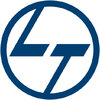Filter interviews by
Electric Power Research Institute Interview Questions and Answers
Be the first one to contribute and help others!
Interview questions from similar companies

Assistant Manager Interview Questions & Answers
Jindal Steel and Powerposted on 1 Dec 2020
Interview Questionnaire
1 Question
- Q1. First Technical round, second salary discussion....
Interview Preparation Tips

I applied via Naukri.com and was interviewed in May 2021. There were 3 interview rounds.
Interview Questionnaire
1 Question
- Q1. Why you leave the privious company.
Interview Preparation Tips

Associate Software Engineer Interview Questions & Answers
S&P Globalposted on 28 Nov 2021
I applied via Recruitment Consultant and was interviewed before Nov 2020. There was 1 interview round.
Interview Questionnaire
5 Questions
- Q1. Core java questions like hashmap, concurrent hashmap,
- Q2. Spring questions : bean, autowired, dependency injection,
- Q3. Db questions
- Q4. Angular questions
- Q5. Basic coding question
Interview Preparation Tips

I applied via Recruitment Consultant and was interviewed before Nov 2020. There was 1 interview round.
Interview Questionnaire
2 Questions
- Q1. Python programming questions
- Q2. Custom Exceptional Handling
Interview Preparation Tips

I applied via Walk-in and was interviewed before Jun 2021. There were 2 interview rounds.
(1 Question)
- Q1. What is EPS? Why balance sheet always match?
- Ans.
EPS stands for Earnings Per Share. Balance sheet always matches due to the fundamental accounting equation.
EPS is a financial metric that measures the profit earned by a company per outstanding share of common stock.
It is calculated by dividing the net income of the company by the total number of outstanding shares.
Balance sheet always matches because of the fundamental accounting equation which states that assets must...
(1 Question)
- Q1. What is depreciation and amortization?
- Ans.
Depreciation and amortization are accounting methods used to allocate the cost of assets over their useful lives.
Depreciation is the allocation of the cost of tangible assets, such as buildings or equipment, over their useful lives.
Amortization is the allocation of the cost of intangible assets, such as patents or copyrights, over their useful lives.
Both depreciation and amortization are non-cash expenses that reduce t...
Interview Preparation Tips
- Accounting principles

I applied via Referral and was interviewed before Aug 2021. There were 2 interview rounds.
A case study shared with me, to discuss the product strategy of a miniscule ERP for shopkeepers
(1 Question)
- Q1. How you conduct research and analysis?
- Ans.
I conduct research and analysis by following a structured approach that involves defining the problem, gathering data, analyzing the data, and presenting findings.
Identify the problem or question to be answered
Determine the scope of the research
Gather data from various sources such as surveys, interviews, and databases
Organize and analyze the data using statistical tools and techniques
Interpret the results and draw con...
Interview Preparation Tips

Interview Questionnaire
8 Questions
- Q1. Java
- Q2. Python
- Q3. Django
- Q4. Html
- Q5. Css
- Q6. JavaScript
- Q7. Sql
- Q8. Dbms

Interview Questionnaire
3 Questions
- Q1. I was basically asked the programming language that I know, then all the questions from that only.
- Q2. OOPS concept
- Q3. Basic questions on DBMS

I applied via Campus Placement and was interviewed in Oct 2020. There were 3 interview rounds.
Interview Questionnaire
1 Question
- Q1. Difference between Java and JavaScript?
- Ans.
Java is a general-purpose programming language while JavaScript is a scripting language used for web development.
Java is compiled while JavaScript is interpreted
Java is statically typed while JavaScript is dynamically typed
Java is used for developing desktop applications, web applications, and Android apps while JavaScript is used for web development
Java code runs on a virtual machine while JavaScript code runs on a we...
Interview Preparation Tips
Skills evaluated in this interview

I applied via Company Website and was interviewed in Oct 2020. There were 4 interview rounds.
Interview Questionnaire
3 Questions
- Q1. Oops concepts
- Q2. Project details
- Q3. Coding questions
Interview Preparation Tips
Tell us how to improve this page.
Interview Questions for Popular Designations
Interview Questions from Similar Companies
Electric Power Research Institute Reviews and Ratings
based on 2 reviews
Rating in categories

TCS

HCLTech

Larsen & Toubro Limited

BYJU'S
- Home >
- Interviews >
- Electric Power Research Institute Interview Questions







